On 10/21/24 I drove through the tail end of the clearing storm to again reach Hurrah Pass prior to dusk, and now the waning moon remained well beneath the horizon until around the time the comet set. The tail of Comet Tsuchinsan-Atlas had become substantially smaller and less bright in the five days I was away, but the sky conditions would reward me with no clouds and stellar transparency.
My secondary target for the night, the Starlink Satellite Flare Zone, would lie just north of the point where the comet set, and thus provide a great opportunity for a grand panorama containing the Milky Way, Comet Tsuchinsan-Atlas, and the flaring satellites. Because of the variety of targets, I ended up running three cameras (I usually only run two), and dug out the 5Ds to capture an additional 28mm timelapse of both the comet and the flare zone.
Hurrah Pass provides a great view of the western sky, albeit with some of the foreground landscape brightly illuminated at night by the industrial lights of the Intrepid Mining Co. Potash Ponds, located in the Shafer Basin area west of Moab, on the other side of the Colorado River. Deadhorse Point lies on the horizon just beyond the southern pond (Pond 2), with Canyonlands National Park to the south, beneath the fall Milky Way, with abundant airglow radiating varying colors outward across the night sky. The following image is a 220° panorama with the sloping ridgeline beneath the high point of Anticline Overlook at left-center, while the light dome of Moab lights up the horizon at the right edge of the image:

Starlink Satellites Flaring in Hercules
Generally speaking there are two Starlink Flare Zones for every 24 hour period, which occur an increment of time after dusk and prior to dawn (they are geometrically symmetrical on either side of astronomical midnight, the time of night where the sun is at its maximum declination below the horizon). Every time I shoot the Starlink Flare Zone I’m never quite sure exactly what I’m going to get, as the sun is always ‘moving’ north or south with the seasons, directly illuminating from below a different spatial/geometric combination of the various Starlink orbital shells. There are 3 primary shells of the Starlink constellation at 53°, 43° and 70° inclinations, and their relative visibility changes with the declination/azimuth of the sun. As the sun moves through the year, these flare zones move through different constellations in the night sky. I always try to capture both the dusk and dawn flares, but am often foiled by the dawn time interval, as it seems common for high cloud layers to develop over the desert prior to sunrise. On this trip I was not able to capture the dawn flares on either of the nights I attempted to capture them.
As summer turns to fall, the sun proceeds back toward the south for the winter, and the dusk flare zone in the northwest sky moves southward along with it. The dusk flare zone during this trip was at about 290°, just a bit north of due west. This provided an opportunity to be able to catch the 43° inclination shell of the Starlink constellation with the sun below its most-northerly transit boundary, as viewed from nearly directly east of it. Looking to the WNW, the satellites flaring in these images were located over the Pacific Ocean, more than 1400 miles away:
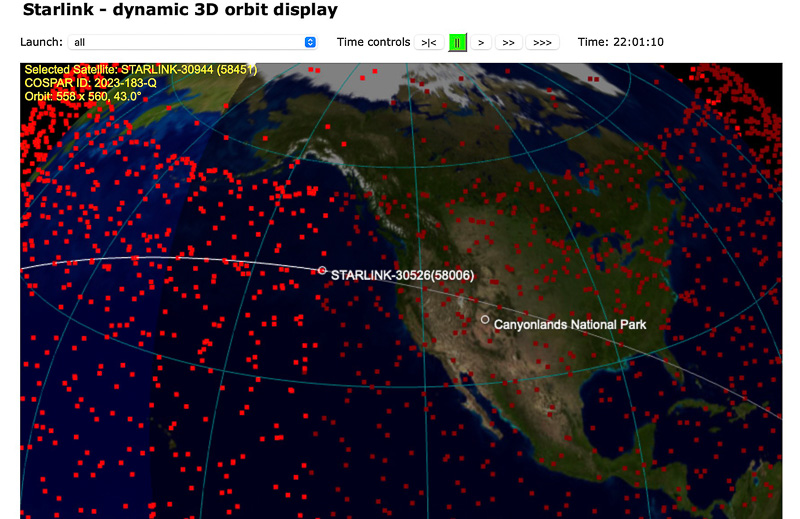
As of October 2024, the Starlink constellation consists of 4 primary inclinations:
- 43° inclination: 2100+ satellites
- 53° inclination: 4400+ satellites
- 70° inclination: 400+ satellites
- 97° inclination: 230 satellites
The orbital altitudes of the constellation mostly varies from 525-560km, with a very small portion of recently-launched satellites down around 280km.
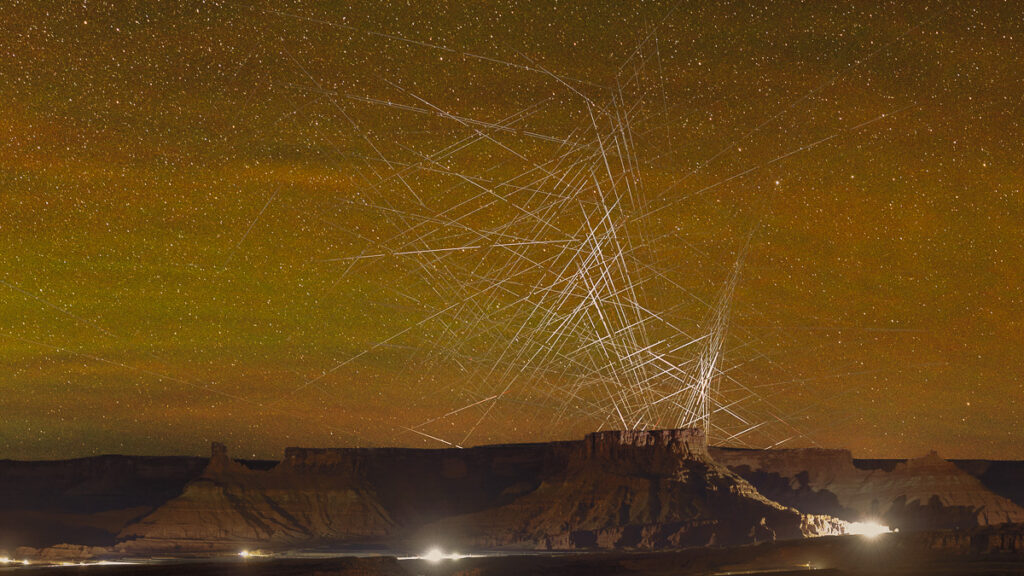
Note that the 43° inclination satellites scribe three sets of flare tracks that emanate nearly vertically from the horizon. There are two lower-angle sets of flare tracks that constitute a smaller number of 53° inclination satellites, as their paths are not converging at their most-northerly limit, the way the 43° satellites are. Likely there are no 70° inclination satellites can be seen flaring to the west this time of year, as they are passing from south to north, and would only very rarely flare from this geometric viewpoint.
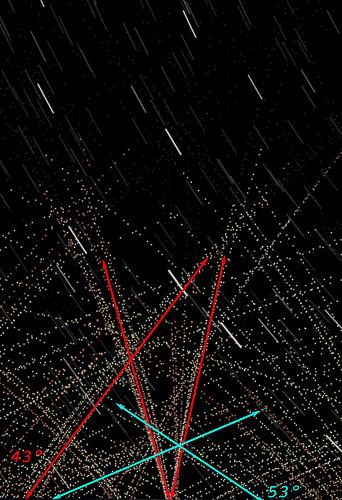
Lastly, a shot of Comet Tsuchinsan-Atlas captured with an 85mm lens:
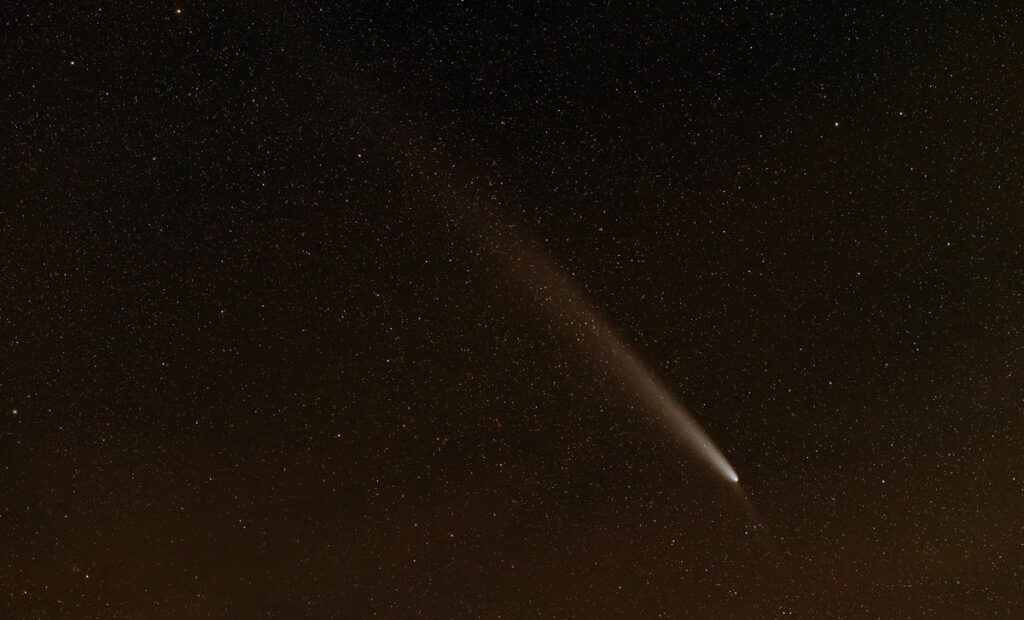

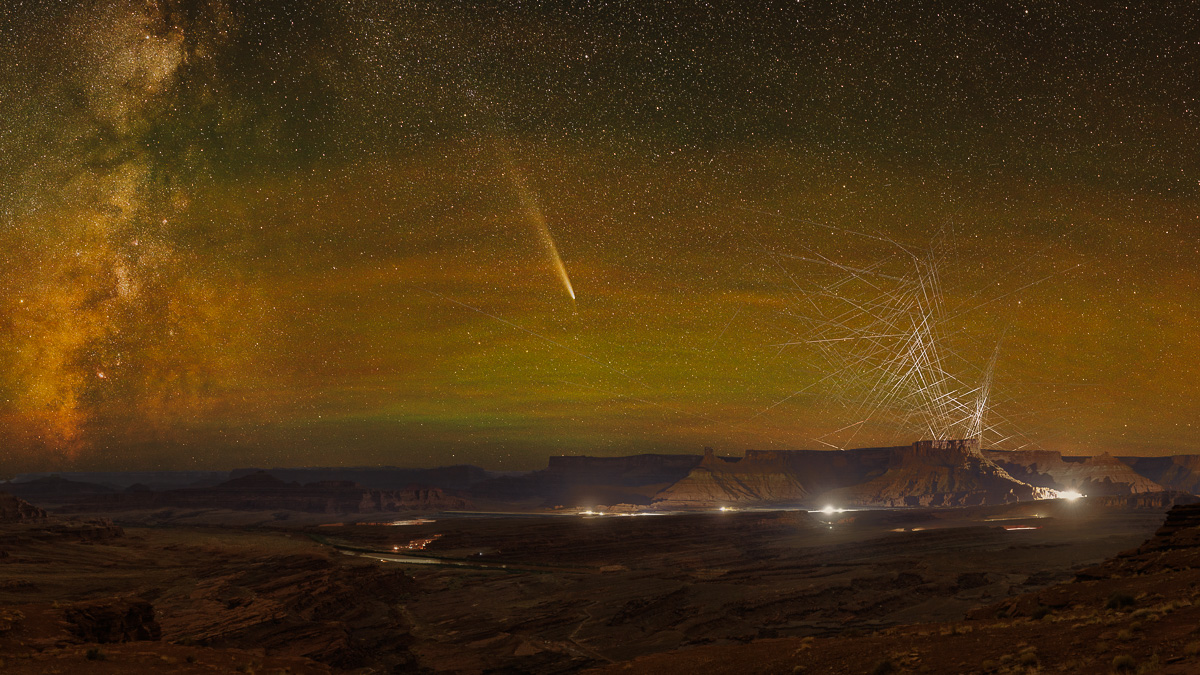
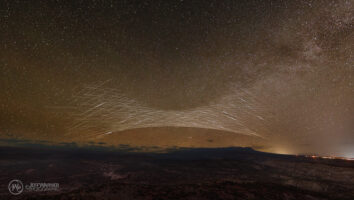
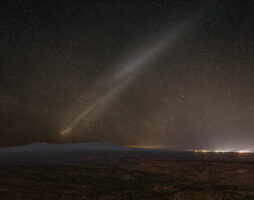
![8/19/23: What are those flashing lights in the sky? [v.1]](https://catchingtime.com/wp-content/uploads/2023/08/3_StarsALIGNED-full_1024x-381x200.jpg)